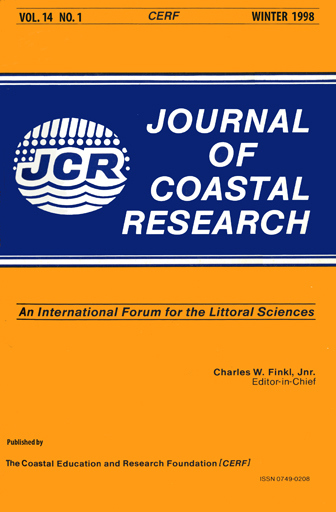Observed Directional Wave Spectra During a Frontal Passage
Keywords:
Directional waves, wave energy, wave-energy log time, wave field data, northeastern Gulf of Mexico, National Data Buoy Center (NOAA), nonlinear wave process, and cold-frontAbstract
This paper qualitatively discusses the changes in the directional wave field as the result of an atmospheric cold front passage. The directional wave data were measured using a 3-m discus buoy in the north-eastern Gulf of Mexico using a Longuet-Higgins technique with 46 frequency bands (0.0325 to 0.485 Hz).
Changes in the directional wave spectra were examined during a 4-day period that included a major wind shift under both quasi-steady and nonsteady wind fields. A procedure of combining the wave-energy into four directional quadrants, in lieu of individual mean directions, was examined as an analytical time-series technique for directional wave spectra. The lag time between a wind speed increase and a corresponding increase in wave-energy was shown to be a function of the existing sea state with shorter lag times for a higher sea condition. A numerical model analysis of VAN VLEDDER and HOLTHUIJSEN (1988) indicated that after a major wind shift the wave-energy would not only move to lower frequencies, but would also rotate to realign with the direction of the older wind field. The conclusions of VAN VLEDDER and HOLTHUIJSEN (1988) were supported by direct observations of pre- and post-frontal wave fields. Hourly, polar contoured, directional wave spectra plots show a narrow frequency band energy bridge between the two wave fields. The development of an energy bridge is shown to correspond to a change in the decay rate of the old wave field.


